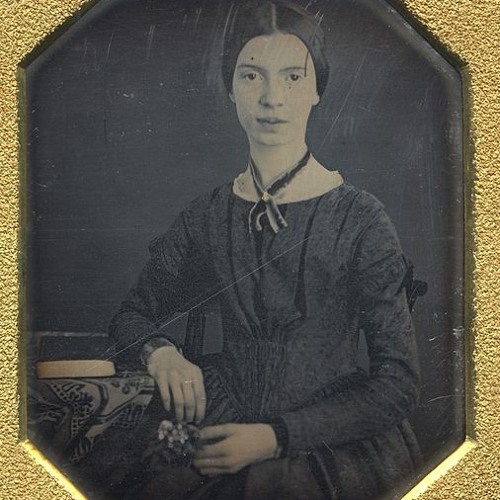Table of Contents
ToggleIntroduction
After great pain,A formal feeling comes By Emily Dickinson Emily Dickinson (1830–1886) is one of America’s most celebrated poets, known for her concise, enigmatic style and her exploration of profound themes such as death, immortality, love, and the human condition. In her poem After Great Pain, a Formal Feeling Comes, Dickinson delves into the psychological aftermath of intense emotional suffering, using vivid imagery and a distinct structure to convey the complex process of grief and emotional recovery. The poem offers a meditative look at how humans respond to deep emotional turmoil, portraying the cold, mechanistic nature of what follows extreme pain.
The poem’s tone is somber and introspective, reflecting the speaker’s inner world as they navigate the disorienting experience of emotional numbness after enduring a profound loss or hardship. Through Dickinson’s use of formal, almost detached language, the poem explores the emotional transition that follows intense suffering, from anguish to numbness, and ultimately to a sense of cold detachment. In this sense, After Great Pain, a Formal Feeling Comes is a meditation on the emotional journey that follows tragedy or grief, highlighting the paradox of how something as intangible as pain can lead to physical and emotional numbness.
The title itself suggests the poem’s focus on the moment after the climax of intense emotional pain has subsided, but the aftermath — a “formal feeling” — is no less impactful. In this essay, we will examine the poem’s meaning, structure, and themes in depth, offering a comprehensive analysis of this work and its exploration of the human experience of grief and loss.
Summary of the Poem
The poem After Great Pain, a Formal Feeling Comes is written in the first person, which gives it a personal and intimate tone. In the poem, Dickinson presents an emotionally charged experience in which an individual, after undergoing significant pain, is left with an overwhelming sense of emotional numbness.
The poem opens with the line, “After great pain, a formal feeling comes,” which suggests that after experiencing intense suffering, a person enters a period of emotional withdrawal or disconnection. The word “formal” implies that the feeling is not spontaneous or natural but rather something cold, detached, and almost mechanical — an effort to regain control after an emotional upheaval.
In the second stanza, Dickinson describes how this “formal feeling” manifests. The imagery used is striking: she writes that the “Nerves sit ceremonious, like Tombs,” which suggests that the person is so emotionally drained that their physical and emotional responses are stiff and robotic, as if performing a ritual rather than living a true emotional response. The “Tombs” imagery evokes a sense of finality and death, which is a powerful metaphor for the emotional state of the person. The person has not only suffered loss but has been so profoundly affected by it that their emotional capacity feels numb or deadened, like a grave.
Read more
Next, Dickinson uses the metaphor of “the Hour of Lead,” a phrase that suggests the crushing weight of the emotional burden the person carries after pain. This “Hour” represents a period of emotional paralysis, during which the person cannot escape the heaviness of their feelings. “Lead,” a heavy metal, symbolizes the emotional weight that the person must bear during this time of suffering. The “Hour of Lead” stretches on interminably, as it is an undefined period when time slows down and the individual is immobilized by the magnitude of their grief or sorrow.
The final stanza of the poem adds to this overwhelming feeling of stagnation. Dickinson compares the person’s state of numbness to that of “an Arctick” — a reference to the frigid, unchanging nature of the Arctic region, where nothing changes, and everything is cold and still. This evokes the idea that, in the aftermath of great pain, there is a loss of vitality and movement. The person is caught in an emotional freeze, disconnected from life’s rhythms. The “formal feeling” that has replaced the raw emotion of pain is one that lacks warmth, change, or progress.
Through the structure of the poem and the stark, image-laden language, Dickinson captures the aftermath of intense emotional pain — a phase in which the person cannot return to their previous emotional state and is instead left in a kind of stasis. This state is not one of healing, but rather of passive endurance, where the individual simply exists in a state of numbness, disconnected from the vitality of life and the fullness of human feeling.
Themes in After Great Pain, a Formal Feeling Comes
1. The Emotional Aftermath of Pain and Grief
One of the central themes of this poem is the emotional aftermath of suffering. Dickinson explores the idea that pain, particularly grief, does not immediately disappear after the event. Instead, it often gives way to a detached numbness, a “formal feeling” that is less an active emotion and more a resigned state of being. The poem suggests that after intense emotional upheaval, individuals may experience a profound sense of inertia — they are unable to react with the same vitality or intensity as they once did. This period of numbness is depicted as a kind of emotional recovery process, but it is cold and detached, a necessary response to the overwhelming nature of the pain.
The person in the poem is depicted as frozen, unable to engage fully with the world around them. This stasis is not necessarily healing; instead, it is a defense mechanism that allows the person to cope with what has happened without being further overwhelmed. The poem captures the feeling that pain is not something that can be simply “mended” but is an experience that reshapes the way one interacts with the world.
2. The Loss of Vitality and Human Connection
Through the metaphor of the “Nerves sit ceremonious, like Tombs,” Dickinson explores the loss of vitality and human connection that often accompanies grief. After experiencing great pain, the individual feels emotionally “dead” or detached. The comparison to tombs suggests that the person has become emotionally embalmed — disconnected from their own feelings and the world around them. This feeling of emotional numbness is a form of self-preservation, but it is also a form of alienation, as the person no longer feels fully alive.
The idea that the individual is no longer connected to the “sun” of life — the warmth and vibrancy of human experience — suggests that great emotional pain can sever one’s ties to the world and other people. The person has been left in a state of emotional isolation, where even their own senses seem muted. The poem implies that suffering, though inevitable, can lead to a feeling of profound detachment from others, as the individual no longer has access to the usual emotional responses that foster connection and empathy.
Read more
3. Time and the Weight of Suffering
In the line “The Hour of Lead,” Dickinson employs the metaphor of time itself as an oppressive force. Time in the aftermath of great pain does not feel like it moves forward in a linear fashion; instead, it is distorted and elongated. The “Hour of Lead” suggests that the person is caught in a state of emotional suspension where time does not offer comfort or relief but rather increases the burden of grief. The image of lead also suggests that suffering weighs heavily on the person, as though the passage of time is laden with heaviness, making recovery seem impossible.
This theme speaks to the psychological impact of grief and trauma, where time can feel suspended, as if the individual is trapped in a moment of loss. The weight of suffering can make time feel both interminable and crushing, as if each moment of existence is a reminder of what has been lost.

4. The Relationship Between Pain and Formality
The juxtaposition of pain and formality is central to the poem’s exploration of emotional coping. Pain is chaotic, intense, and all-encompassing, while formality suggests order, control, and detachment. The shift from great pain to a “formal feeling” implies that after emotional upheaval, there is a desire or need to regain some control over one’s emotional state. However, this formal feeling is not a true form of healing but rather a stifling mechanism that imposes order in the face of chaos. Dickinson’s use of “formal” as a descriptor for this feeling suggests that grief and pain can lead to a kind of emotional repression — an effort to appear composed while feeling numb or disconnected.
The “formal” nature of the aftermath reflects the difficulty of processing intense emotional pain, as the individual is forced to adopt a more detached stance. This detachment, though essential for survival, is also a reminder of the emotional cost of suffering, as it indicates a loss of spontaneity, warmth, and connection to life’s deeper pleasures.
Conclusion
Emily Dickinson’s After Great Pain, a Formal Feeling Comes offers a haunting exploration of the emotional aftermath of suffering. Through striking metaphors and vivid imagery, the poem captures the profound sense of numbness and detachment that often follows intense emotional pain. The “formal feeling” described in the poem is not a true recovery but rather a coping mechanism that shields the person from further emotional overwhelm. Dickinson’s ability to convey the complex and often paradoxical nature of grief — how it can both stifle and preserve — makes this poem an enduring meditation on the human experience of pain, loss, and emotional survival.
Read more
(FAQ)
1. What is the significance of the title After Great Pain, a Formal Feeling Comes?
The title suggests that after experiencing intense emotional or physical pain, the individual is left with a detached, formal emotional state. This “formal feeling” represents the cold, numbed response that follows great grief, symbolizing how pain often leads to emotional withdrawal and a mechanical existence devoid of the warmth and spontaneity of life.
2. What does the metaphor of the “Nerves sit ceremonious, like Tombs” mean?
The metaphor conveys the idea that after great pain, the person feels emotionally frozen and lifeless, as if their nerves — the sensory part of their being — have become stiff and ceremonious. The comparison to tombs suggests a state of emotional death or stasis, where the person is unable to feel or engage with the world in a meaningful way.
3. What does “The Hour of Lead” symbolize in the poem?
The “Hour of Lead” symbolizes a period of emotional heaviness and paralysis following great pain. The image of lead suggests that time feels slow and burdensome, as if the individual is trapped in a moment of overwhelming grief that drags on endlessly. It highlights the emotional weight of suffering and the stasis it creates.
4. How does the poem address the theme of time in grief?
Time in the poem is presented as distorted by grief. The “Hour of Lead” suggests that time becomes elongated and oppressive after pain, making it difficult for the person to move forward. The passage of time does not offer comfort, but rather serves as a reminder of the unrelenting weight of suffering.
5. What does the poem say about the emotional effects of suffering?
The poem suggests that suffering leads to a temporary emotional numbness or detachment, as the individual cannot fully process or recover from the intensity of their pain. This “formal feeling” is a form of emotional repression, where the individual retreats into a state of coldness in order to survive the aftermath of great grief.
Read more

















